San Antonio's Brackenridge Park
Introduction
Text-to-speech Audio
Developed during the first decades of the twentieth century, Brackenridge Park is a 349-acre public park that contains several cultural institutions, including the Witte Museum, the San Antonio Zoo, the Sunken Garden Theater, and the Japanese Tea Garden. The park is listed on the National Register of Historic Places and is a Texas State Antiquities Landmark. Within the park, contributing structures such as the Water Works Pump House No. 1, the tea garden, and faux-bois footbridge are also separately listed on the National Register. Accessible via the Museum Reach extension of the River Walk, Brackenridge Park is slightly north of downtown San Antonio. There is another park with the same name located near Houston, Texas.
Images
The San Antonio River runs through Brackenridge Park
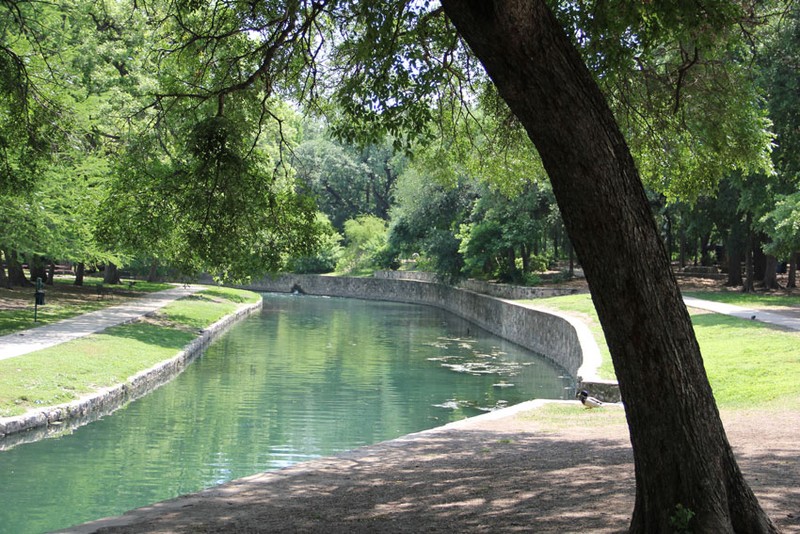
The walking and cycling trail along Brackenridge Park
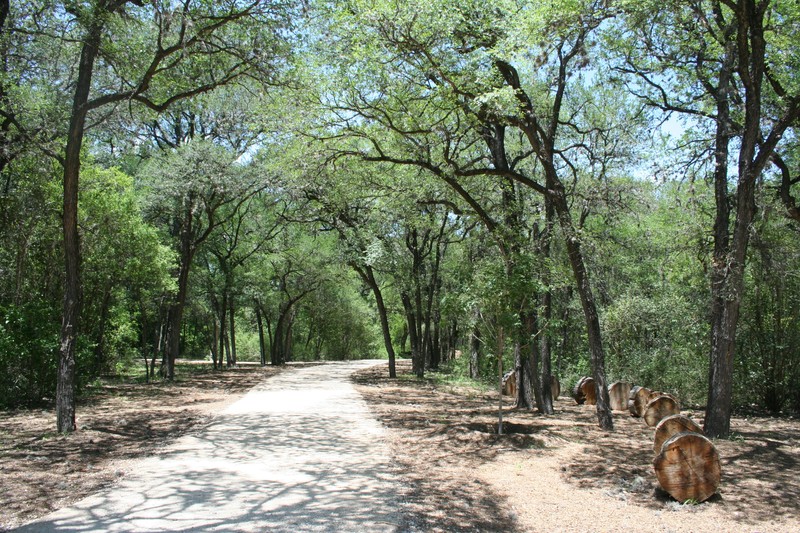
Ducks at Brackenridge Park
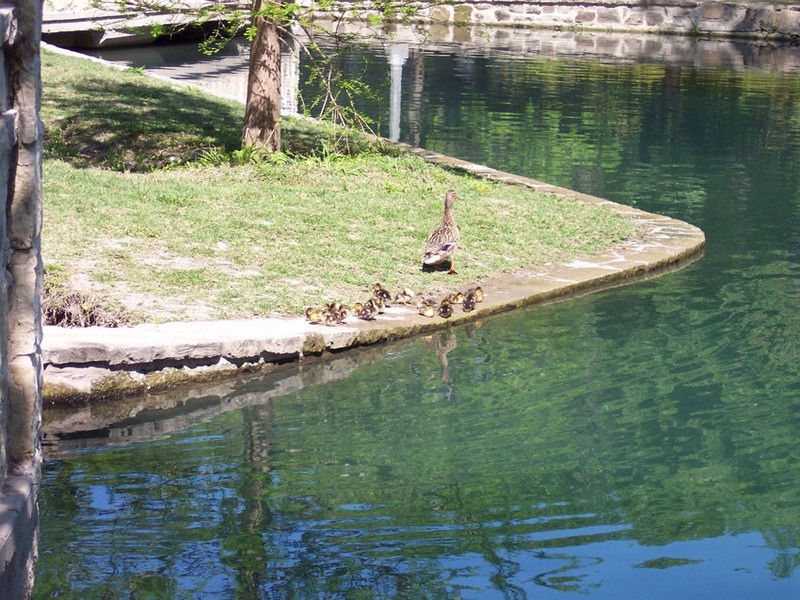
Japanese Tea Garden
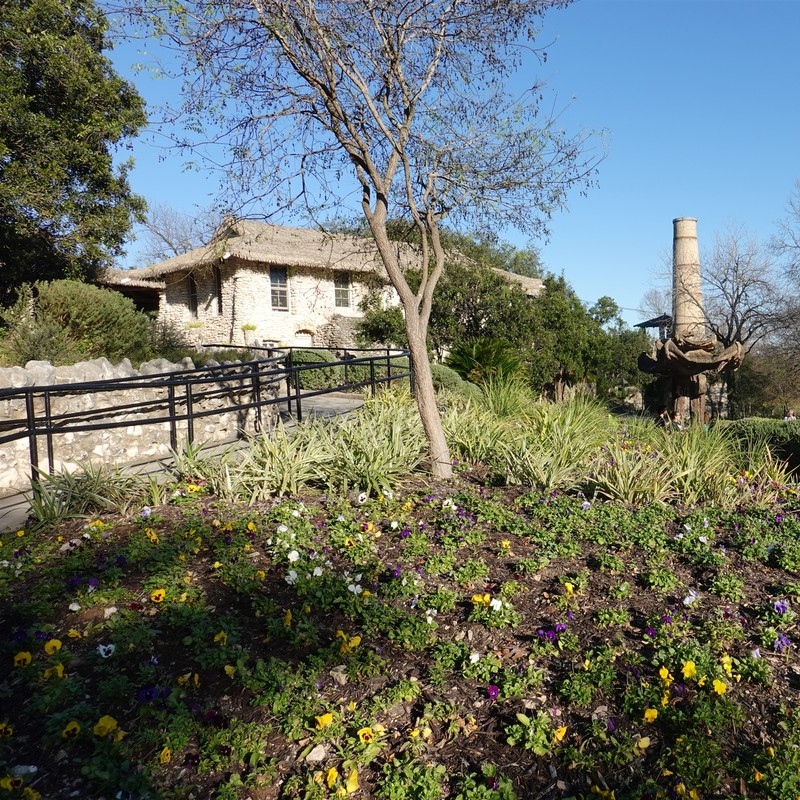
Pond next to the Japanese Tea Garden
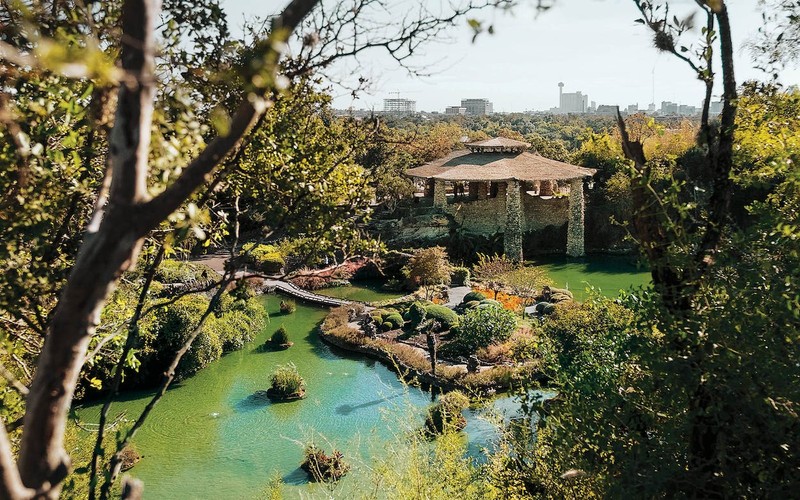
"Brackenridge Park Before 1899" Historical Marker
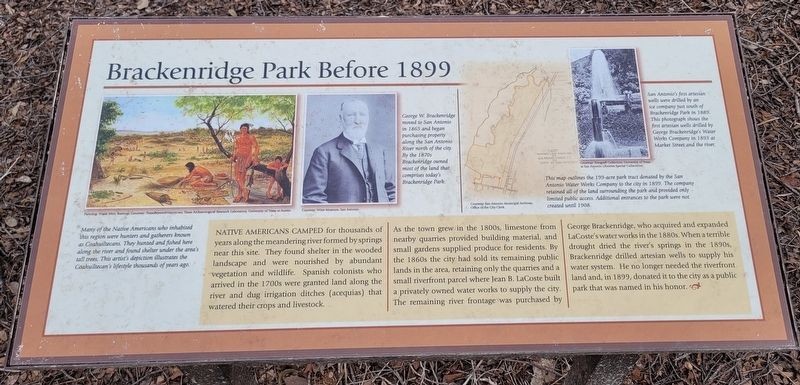
"Brackenridge Park Since 1899" Historical Marker
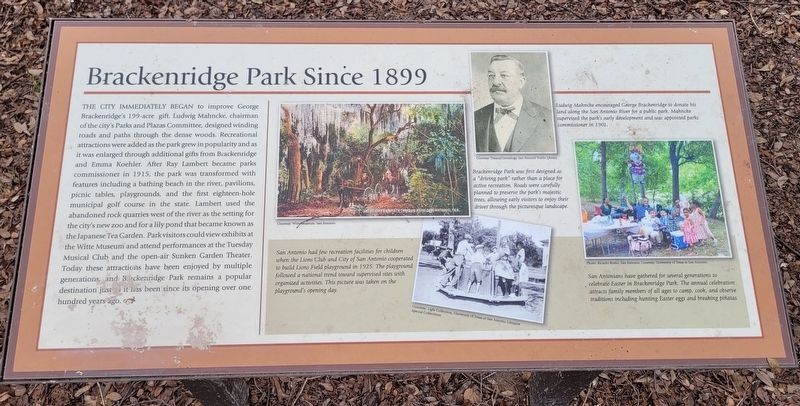
The original pump house in the park
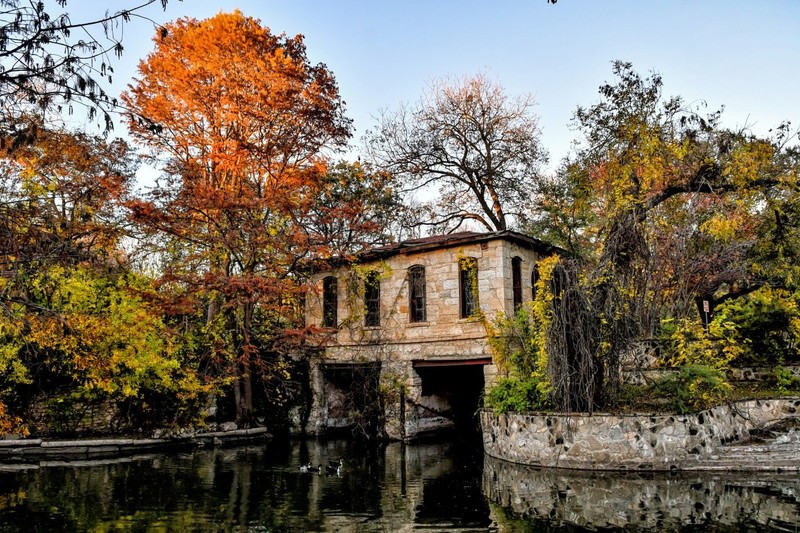
San Antonio Zoo in Brackenridge Park
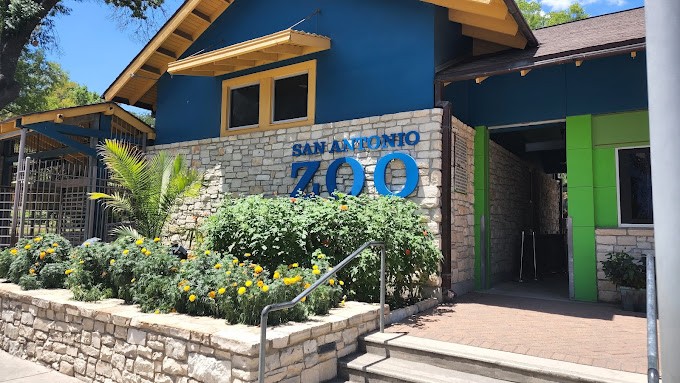
Historic Donkey Barn, leased by the San Antonio Zoo
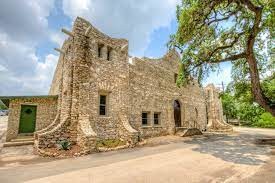
Historic Donkey Barn
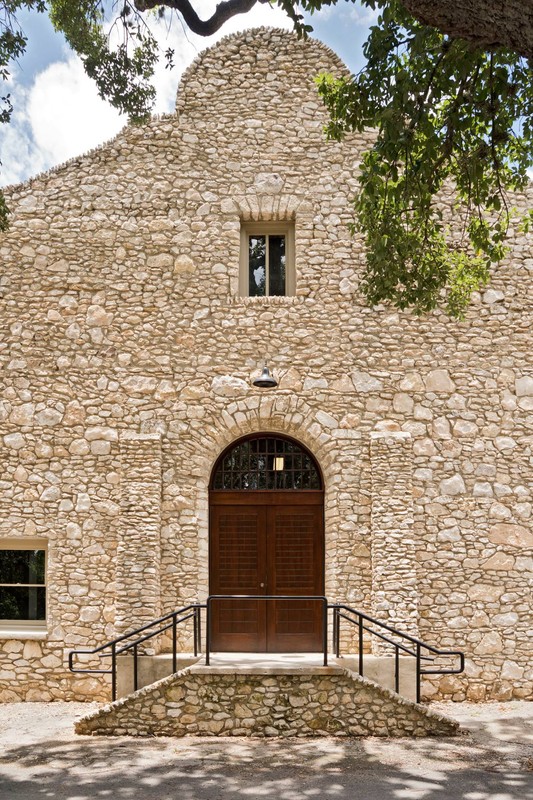
Witte Museum at Brackenridge Park
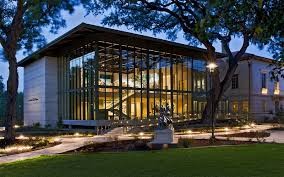
Science display at the Witte Museum
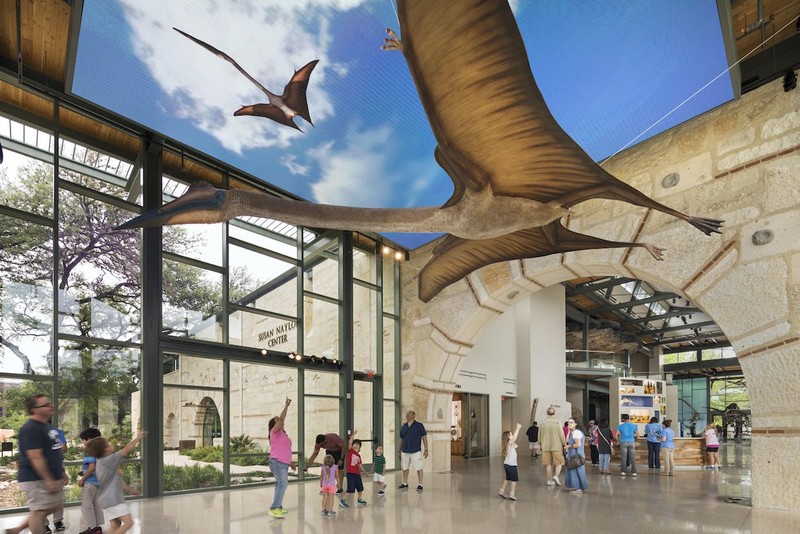
The Witte Museum's South Texas Heritage Center and Pioneer Hall
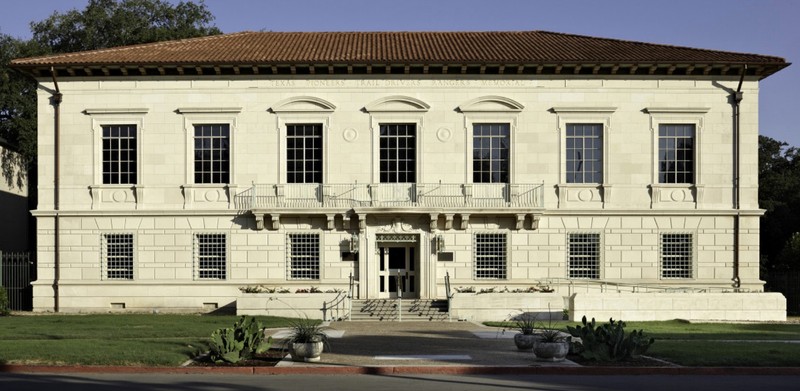
History exhibit at the Witte Museum
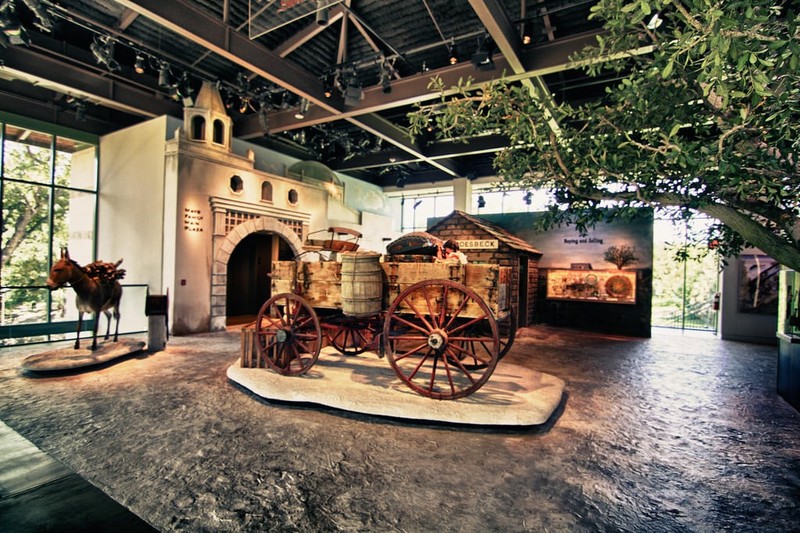
Wedding outside of the Witte Museum at Brackenridge Park
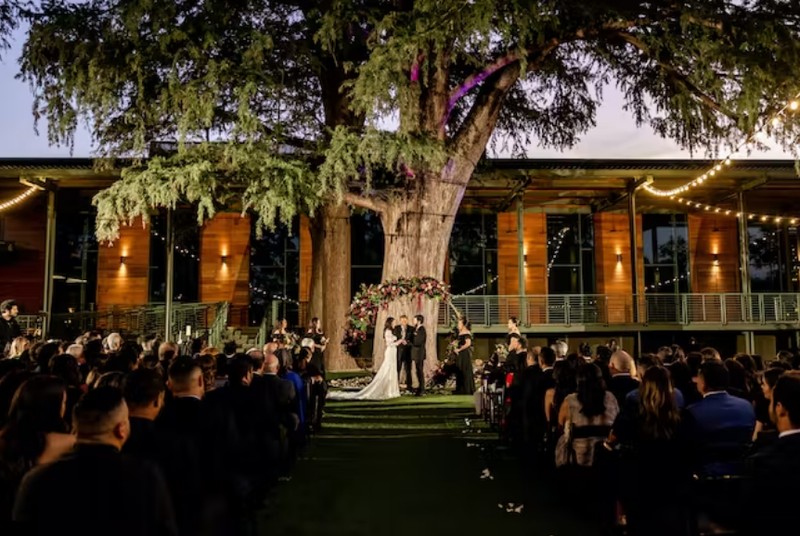
The faux-bois footbridge designed by Dionicio Rodriguez is listed on the National Register of Historic Places
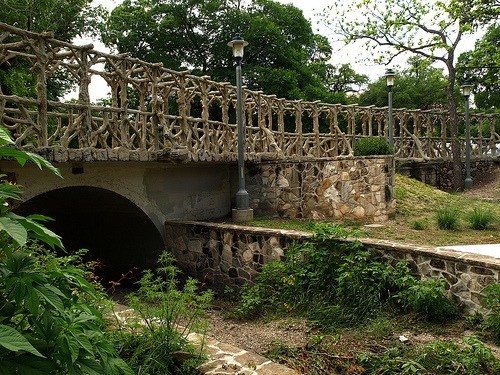
The footbridge is supposed to resemble wood. The term "faux-bois" means "false wood" in French.
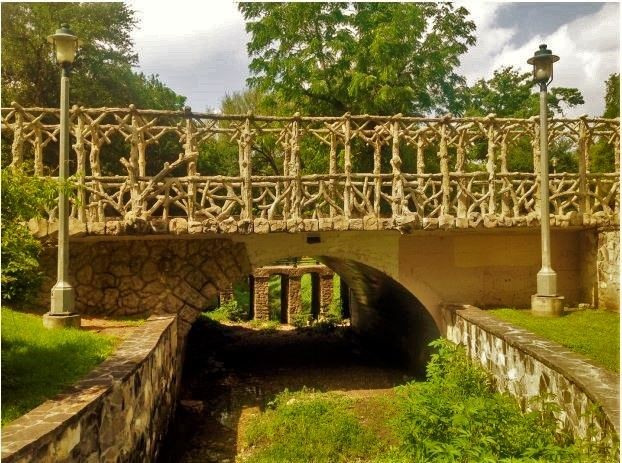
Drawing of the proposed renovation of the Sunken Garden Theater at Brackenridge Park
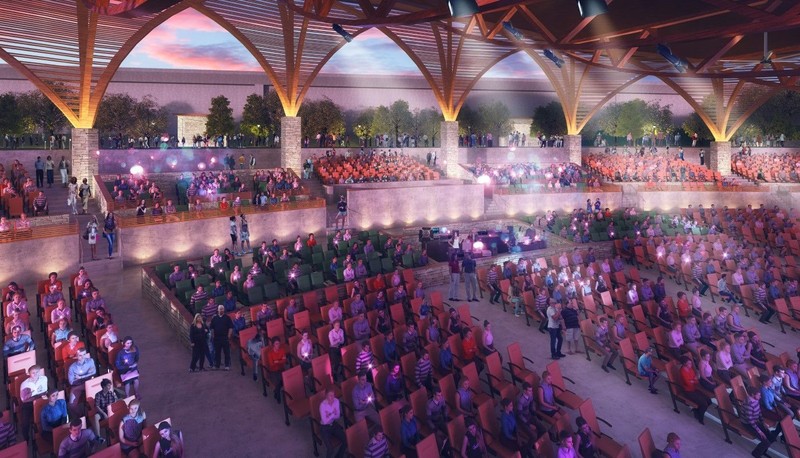
Drawing of the proposed renovation of the Sunken Garden Theater at Brackenridge Park
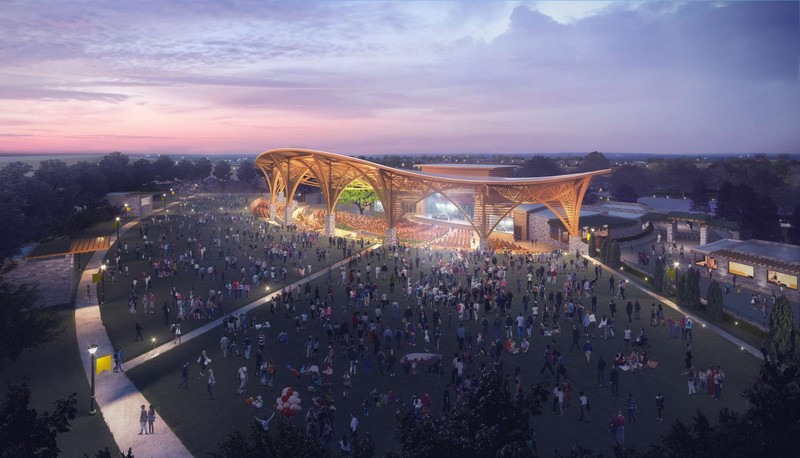
Drawing of the proposed renovation of the Sunken Garden Theater at Brackenridge Park
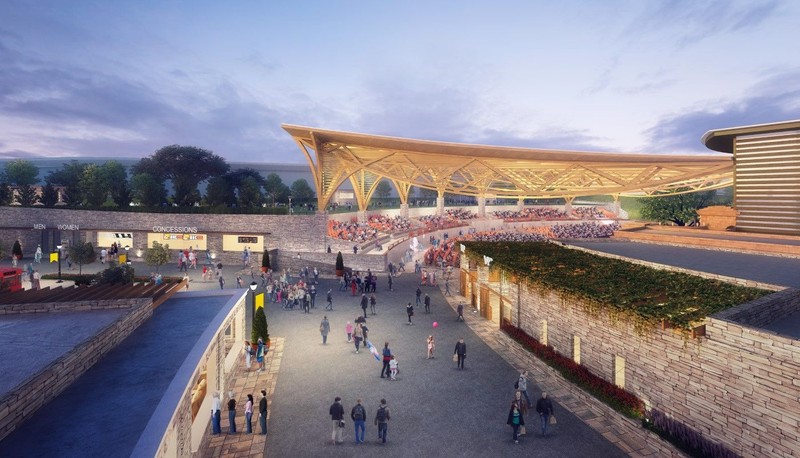
Backstory and Context
Text-to-speech Audio
In 1899, George Brackenridge donated 200 acres of land to the City of San Antonio, which eventually became Brackenridge Park. However, the history of this site began long before this. Archaeologists have uncovered pre-historical evidence to suggest that humans passed through or occupied the area during the late PaleoIndian era (12,000 - 10,000 B.C.E.). For millennia, native peoples relied on the river that flows through this area as a source of food, water, transportation, and shelter. When the Spanish arrived in 1691, they renamed both the river and a local Payaya Indian village "San Antonio de Padua" in honor of a Catholic saint whose feast day they were celebrating. The Spanish began digging ditches or acequias to transport water from the San Antonio River and San Pedro Creek to the settlements they established. After creating a complex irrigation system to harness the water, much of the land was converted to domestic and agricultural use.
Water and land were often a source of conflict as the Spanish Colonial period was followed by the Republic of Texas, statehood, the U.S. Civil War, and the growth of San Antonio as a city. During the eighteenth and nineteenth centuries, the land on both sides of the river continued to support dairy farms, vegetable gardens, and fruit orchards. Where the river flows through what is now Brackenridge Park, small-scale industries (including a sawmill and a tannery) were operated by harnessing the water, and this portion of the river also became the city's primary water source. However, due to several cholera epidemics that affected San Antonio, water sanitation became a major public health issue in the late 1800s. As the city further developed and became more populated, residents demanded a public water system to provide for basic household usage and for fire safety protection. In response, pump houses were installed to provide water from the river to the growing metropolis. With the headwaters of the river located just north of downtown San Antonio, the Water Works Pump House No. 1 was installed in 1877 on the land that later became Brackenridge Park.
The City had previously sold off the river's headwater springs and other public lands in the 1860s to raise funds for a public treasury. As a result, Jean B. LaCoste was the first to construct a privately owned waterworks in order to provide water to the city's residents. In the 1880s, George W. Brackenridge purchased the headwater springs from LaCoste, and he expanded the water works. When a severe drought struck the region in the 1890s and the springs dried up, Brackenridge drilled artesian wells so that he could continue supplying water to the city. In addition to owning the headwaters, Brackenridge also owned another 200 acres east of the river, but in 1899, he decided to donate this land to the city for a public park. His donation encouraged the City to consider its urban planning, land use, and park development, which continued for the next several decades. The park's acreage was gradually expanded through further bequests and other parcels purchased of land by the City.
The park's first commissioner, Ray Lambert, was hired to design rustic bathhouses, a swimming beach, and a children's playground, and by 1915, the park was considered a 'rural retreat.' Lambert also designed an 18-hole wooded golf course, a polo club, and a "zoological garden" with wild animals, which later became the San Antonio Zoo. In 1919, he added a "tourist camp," to serve the growing interest in cross-country automobile travel. A decade later, a winding road through the park led past the Witte Museum, newly established through a bequest from Alfred Witte, who stipulated that a new museum of science and culture must be built within the park. During the 1930s, the park also benefitted from Depression-era federal WPA projects, which improved the infrastructure of the park, the museum, and the zoo. Funds were provided for new entrance gates, retaining walls along the river, and picnic tables.
For the Texas Centennial exhibition in 1936, a new outdoor theater was built and dedicated as the Ray Lambert Texas Start Garden, honoring the late park commissioner. In addition, the Pioneer Hall and South Texas Heritage Center was constructed north of the Witte Museum to share the histories of early Texas pioneers, trail drivers, and rangers. Brackenridge Park includes several other historic structures as well, including the original Water Works Pump House and a 1920 Donkey Barn. A faux-bois ("false wood") footbridge, designed by Dionicio Rodriguez, was installed in the park above a Spanish Colonial dam. In its early years, Brackenridge Park reflected the city's industrial history through an original limestone quarry that had been established on site in the 1850s. The quarry provided the stone for many city buildings, but as the park developed in the early 1900s, people considered the quarry to be an eyesore and potentially hazardous. Consequently, the pit was converted into a Lily Pond, adjacent to the Japanese Tea Garden.
Today, Brackenridge Park continues to include major cultural institutions such as the Witte Museum, the San Antonio Zoo, and the Sunken Garden Theater, a premiere performance venue. The park also maintains its original golf course, as well as baseball fields and pavilions. The Lions Field Adult & Senior Center is located on the perimeter, and the San Antonio Botanical Garden is nearby. Events hosted by the Brackenridge Park Conservancy include "Birdsong Brackenridge," a walking tour that takes visitors past the park's birdhouses, and "Go For Goats!" which highlights the importance of goats for clearing brush to maintain the park's network of trails. Future plans for Brackenridge Park include connecting the site with Mission Espada (13 miles south) and installing additional interpretive signage throughout the landscape to further share the history of this site.
Sources
Brackenridge Park, City of San Antonio Parks and Recreation. Accessed March 29th, 2023. https://www.sanantonio.gov/ParksAndRec/Parks-Facilities/All-Parks-Facilities/Parks-Facilities-Details/ArtMID/14820/ArticleID/2226/Brackenridge-Park.
Cultural Landscape Report and Ecological Assessment, Brackenridge Park Conservancy. Accessed March 29th, 2023. https://www.brackenridgepark.org/conservancy-projects/cultural-landscape-report.
Events: Birdsong Brackenridge Park, Brackenridge Park Conservancy. Accessed March 29th, 2023. https://www.brackenridgepark.org/visit-the-park/events/2023-birdsong.
"History of the Park", Brackenridge Park Conservancy. Accessed March 29th, 2023. https://www.brackenridgepark.org/visit-the-park/history-of-the-park.
Hulse, James. "Brackenridge Park Before 1899", Hmdb. January 26th, 2023. Accessed March 29th, 2023. https://www.hmdb.org/m.asp?m=214754.
City of San Antonio Parks and Recreation
City of San Antonio Parks and Recreation
City of San Antonio Parks and Recreation
City of San Antonio Parks and Recreation
Texas Monthly
James Hulse / Hmdb
James Hulse / Hmdb
Brackenridge Park Conservancy
San Antonio Zoo
Conservation Society of San Antonio
Brackenridge Park Conservancy
Witte Museum
Witte Museum
fpc architects
Here Comes the Guide
The Cultural Landscape Foundation
The Cultural Landscape Foundation
Brackenridge Park Conservancy
Brackenridge Park Conservancy
Brackenridge Park Conservancy
